NASA’s Skywatching Events for April 2023: Recently, the National Aeronautics and Space Administration (NASA) has shared the astronomical events that are going to happen this month. Sky watchers are going to experience some great celestial events involving mercury, the moon, planets, and meteors that would be visible in the night sky including. So, let’s look in detail at the April 2023 skywatching highlights shared by NASA.
🔭 What's up in the night sky this April?
— NASA (@NASA) March 31, 2023
The Moon will pair up beautifully with several planets, while viewing conditions may be ideal for the Lyrid meteor shower. More skywatching tips: pic.twitter.com/6TdJbIMJUx
NASA’s April 2023 Skywatching Highlights: Mercury, Moon, Planets, and Meteors!
As per the chronology shared by NASA, you can spot the Mercury after sunset early this month. After then you can also see the moon's visits with the planets. on 23rd April 2023, you can even catch a shooting star when the Lyrid meteors peak:
| Date | April 2023 Skywatching Events |
| 6th April | Full moon |
| 11th April | Mercury will be at its highest in the evening sky for the year, for Northern Hemisphere observers. Look low in the west soon after sunset [Best viewing is April 3-11, as it climbs a little higher each evening.] |
| Venus sits near the Pleiades star cluster this evening in the west. | |
| 15th to 16th April | Find the moon near Saturn in the east, a couple of hours before sunrise. |
| 20th April | New moon |
| 23rd April | The crescent moon will be hanging just five degrees above Venus in the west after sunset. |
| 23rd April | The Lyrid meteor shower will peak this morning. The best viewing is between midnight and dawn. |
| 25th April | The moon and Mars will pair up this evening, high in the west after dark. |
| 26th to 27th April | The moon will be at its first-quarter phase, which is a great time to observe with binoculars or a telescope if you have access to them. Around this time you can observe details in the lunar craters and mountains along the day-night line (the terminator) with ease. |
Mercury Rising on 11th April 2023
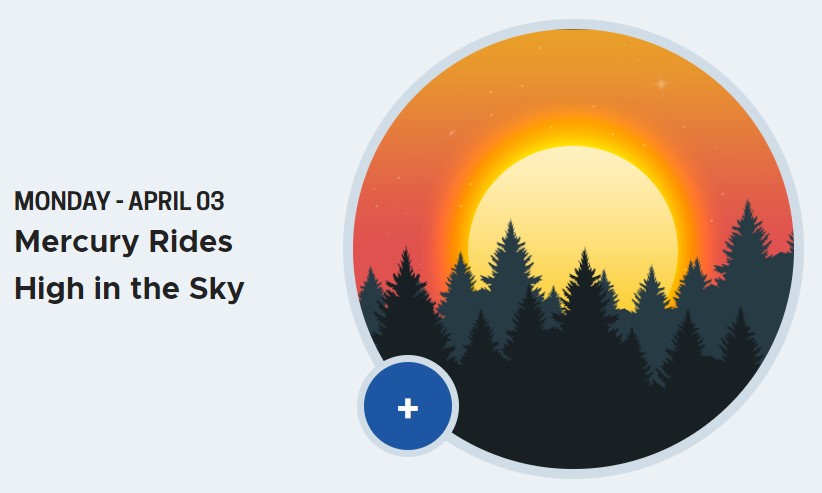
Image Source: NASA
On 11th April, Mercury will reach its highest. The planet will become most visible in the evening sky for the year. Mercury is the smallest and the fastest-moving planet in our solar system. It has the fastest orbital motion in the solar system. Apparitions or Mercury's fleeting appearances will be visible in the Northern Hemisphere during the night between the 3rd to 11th April.
Venus next to the Pleiades Star Cluster - A Time Machine Event on 11th April 2023
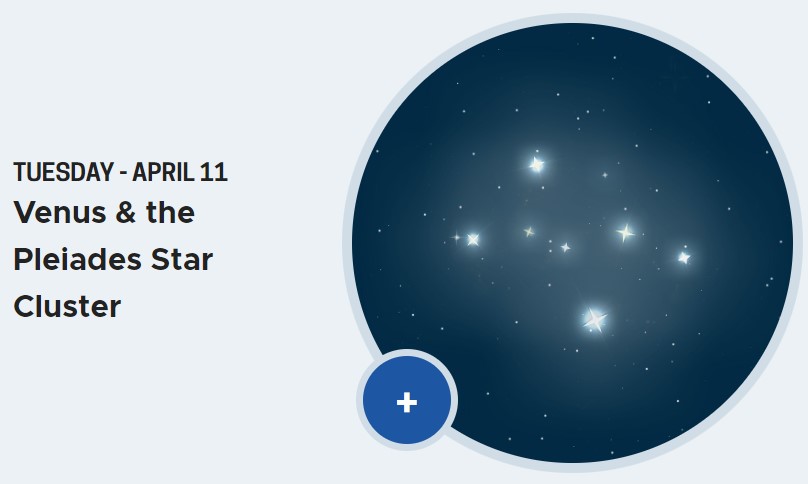
Image Source: NASA
On 11th April, another major celestial event is going to happen! Avid skywatchers can see Venus right next to the Pleiades star cluster through binoculars. NASA is claiming this pairing is going to be like a time machine event by hinting “the farther out into space you look, the farther back in time you're seeing.” This time travel phenomenon will be occurred as on that night you will be seeing the light that left Venus about 9 minutes earlier, whereas the light of the Pleiades left those stars around 400 years ago.
Phases of Moon in April 2023
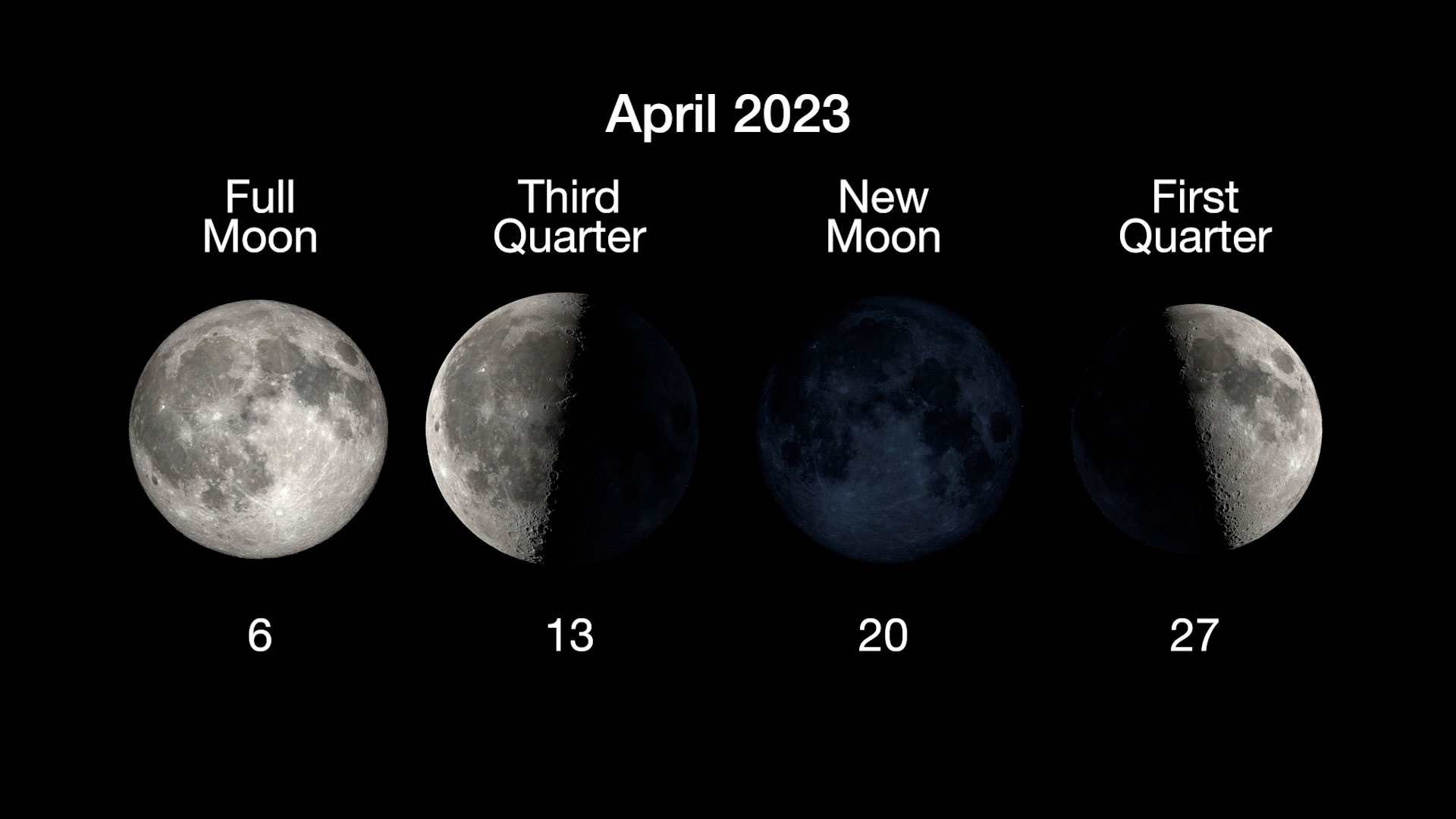
Image Source: NASA
The above image shared by NASA explains the four main phases of the moon. The full moon will be visible on the 6th April. The third quarter of the moon will be visible on the 13th April. The new moon will be visible on the 20th April and the first quarter on the 27th April.
Moon and Planet Pairings in April 2023 - 15th Saturn, 23rd Venus, 25th Mars
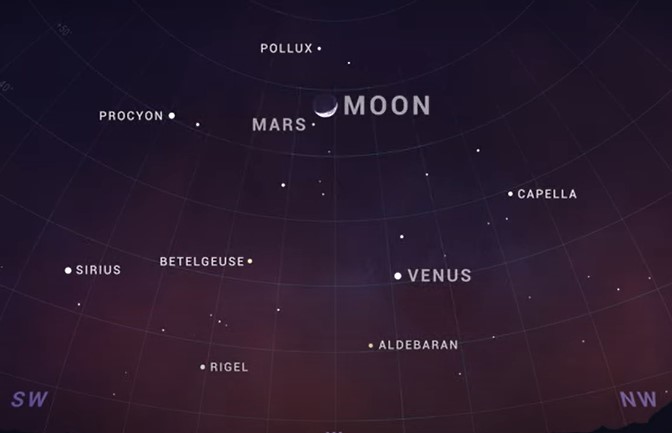
Image Source: NASA
In the second half of April 2023, there will be close encounters of the moon with three bright planets of our solar system. On the 15th and 16th April, you can see the crescent moon rising with Saturn. On the eve of 23rd April, you can view the slim crescent moon hanging just five degrees above Venus in the west after sunset. On 25th April. the moon finds its way over to Mars and will be visible in the night high up in the west.
Lyrid Meteor Shower on 23rd April 2023
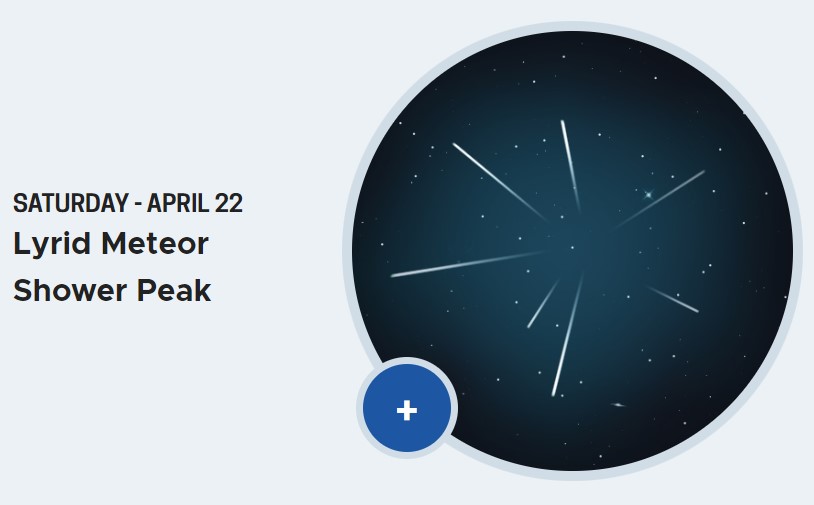
Image Source: NASA
April 2023 is going to bring back the Lyrid meteor shower. Lyrid is a medium-strength shower and under ideal conditions, it can produce up to 20 meteors per hour at its peak. Lyrid Meteor Shower is named after the constellation Lyra which was first seen in China around 2,700 years back. On 23rd April, Lyrids will peak in the pre-dawn hours. So, you may be able to see a few shooting stars in the morning before and after the peak as well.
So, this month is going to be bliss for the skywatchers as they can catch a few shooting stars one April morning, or can also see the moon and planets pairing in the night sky.
Comments
All Comments (0)
Join the conversation